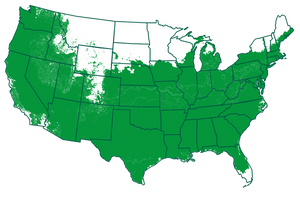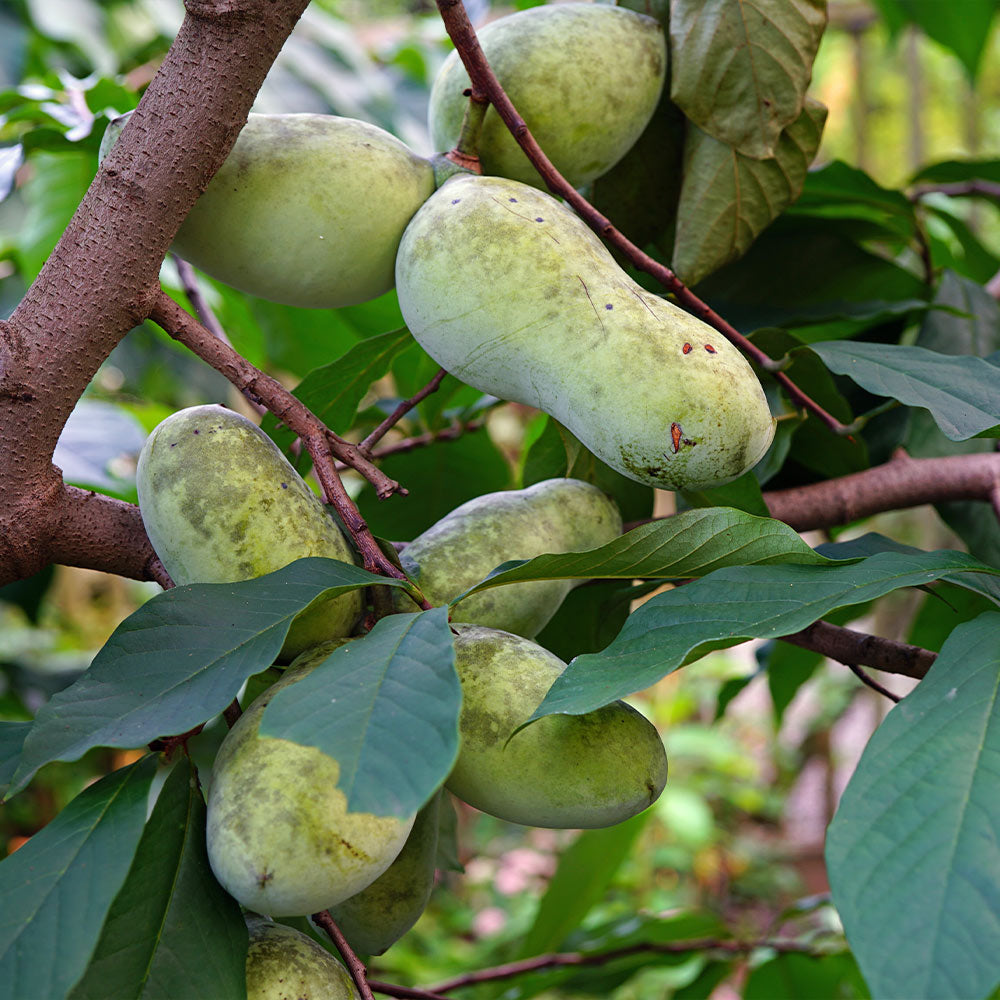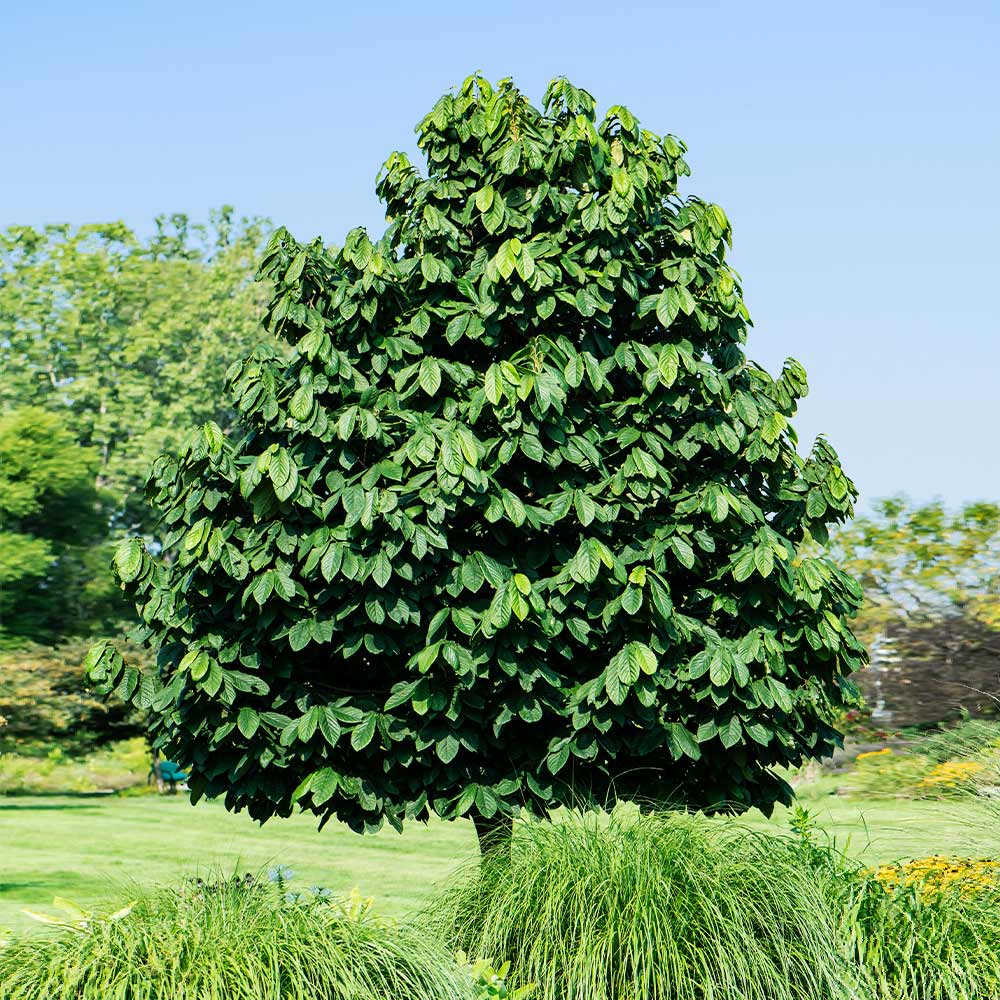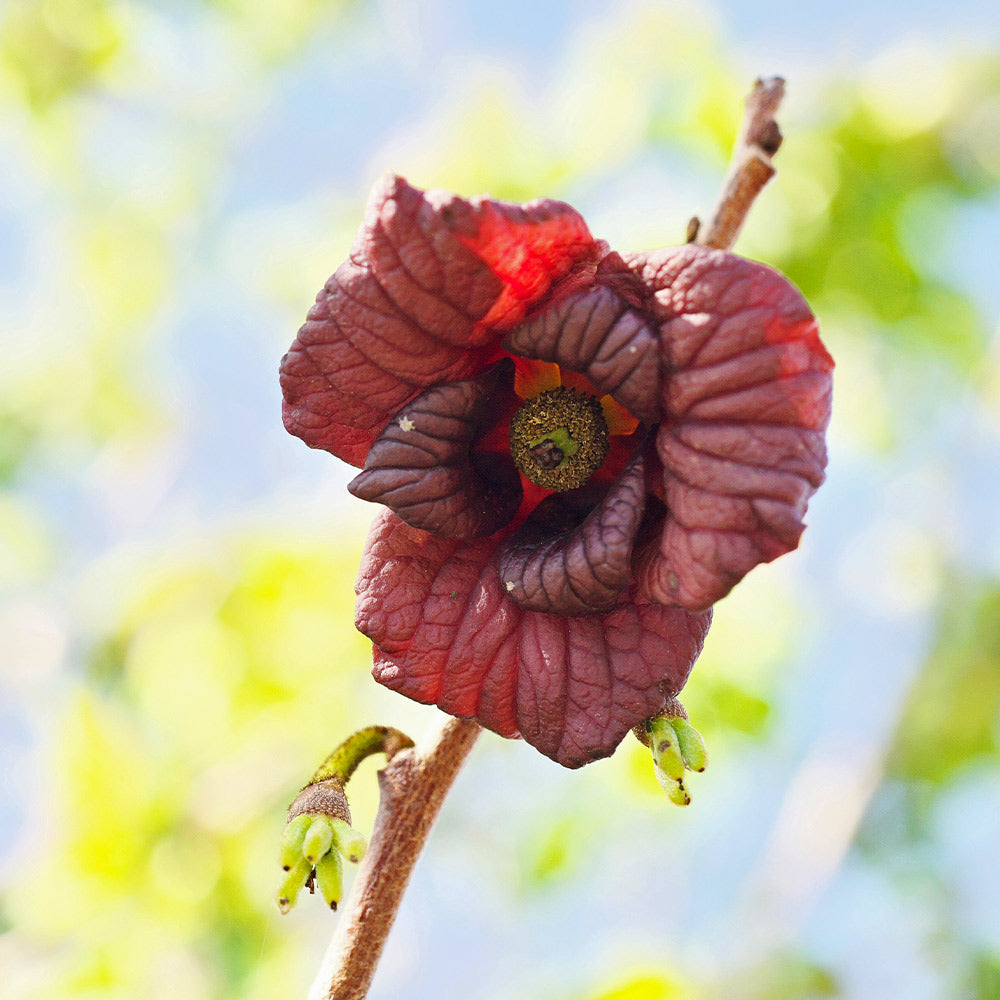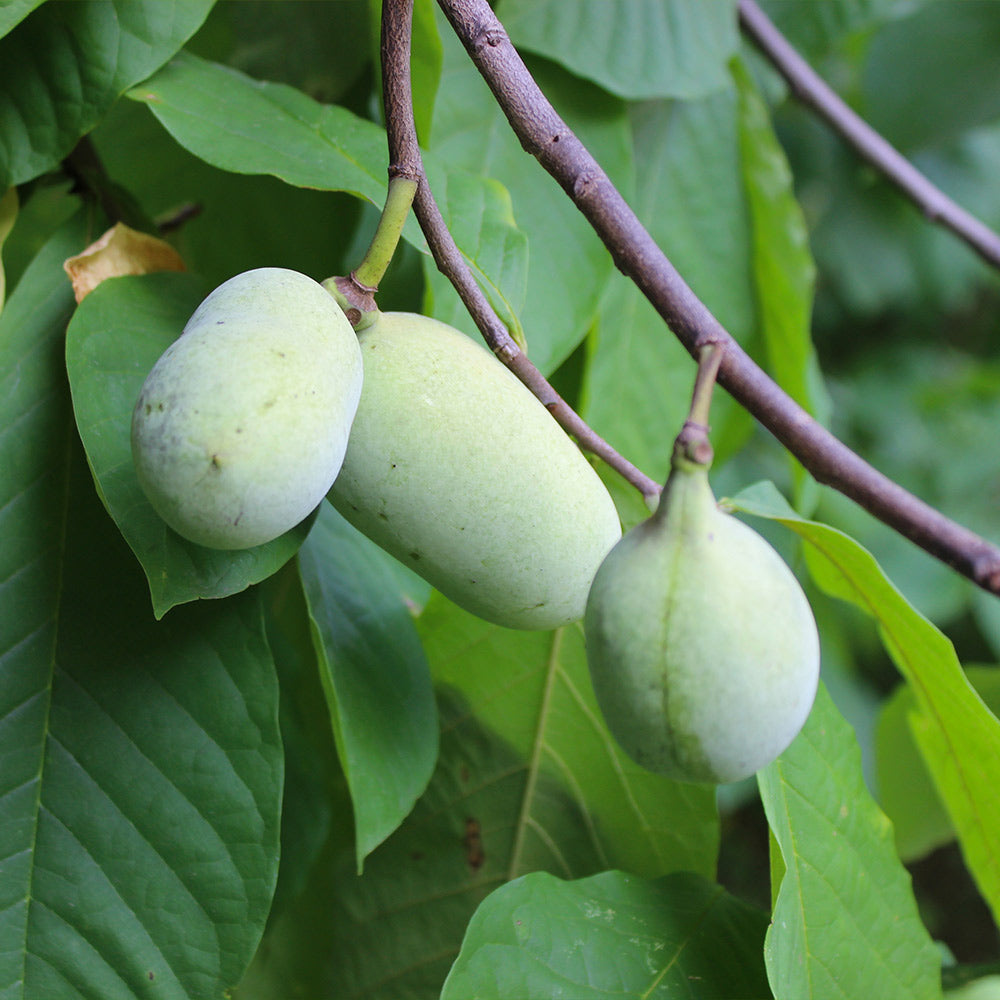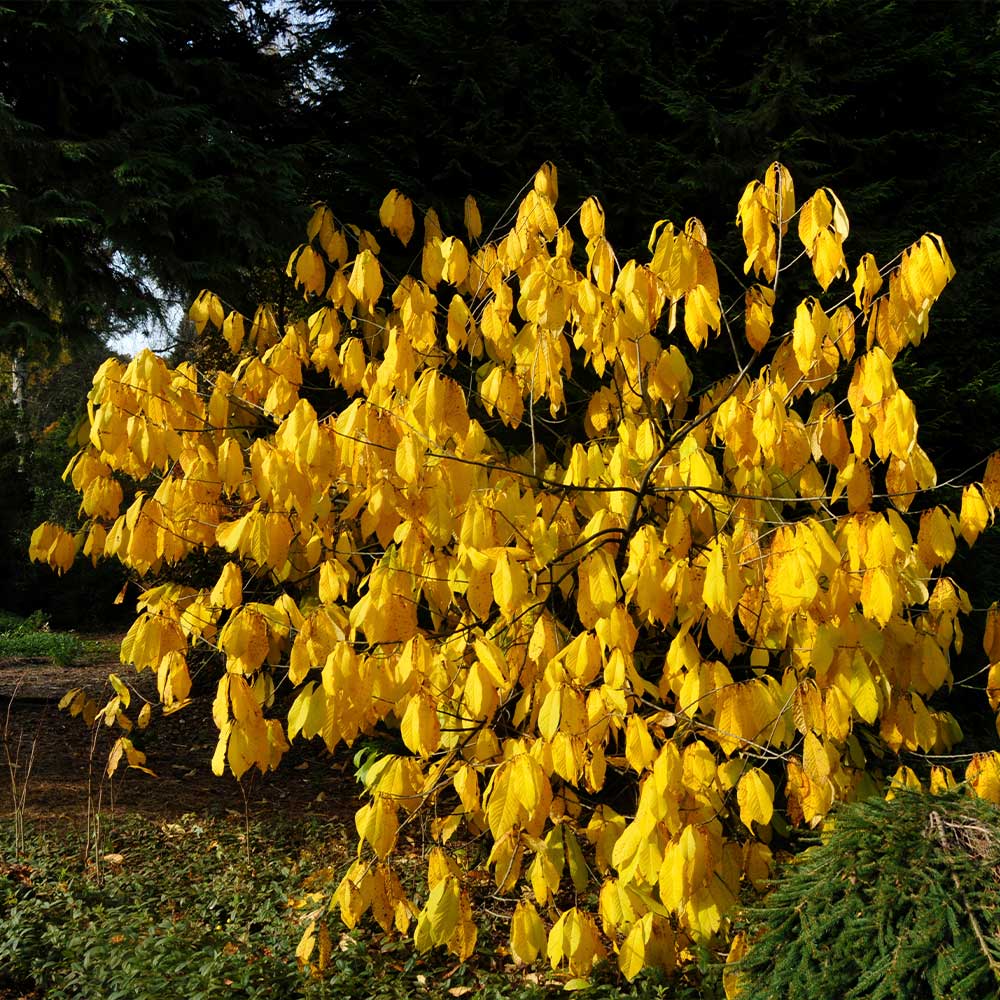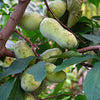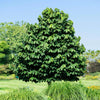* Images shown are of mature plants

Have questions? Talk with our Plant Experts (800) 973-8959
Save 25% on $200+ with code FALL25.
Questions? Call our plant experts: (800) 973-8959
Like Growing Dessert in Your Backyard
Why American Paw Paw Trees?
Sweet and aromatic fruit that tastes like Boston Cream Pie? Not only is this fruit amazingly delicious...but you can now get it in your own backyard. In addition to its delectable fruit, it delivers lush green leaves with tropical appeal and vibrant blooms.
And through it all, it's unbelievably strong. The American Paw Paw is hardy down to an amazing -10 degrees, offering tropical treasures in even the chilliest climates. So, no matter where you live, you can bring the tropics home.
Thick leaves, rich and green in color, flood this mid-sized tree. The canopy is umbrella-shaped, with no lower limbs, giving it a palm-like feel. The Paw Paw gives you the best of both worlds, with large green fruit clinging to a thick, long trunk for unparalleled exotic harvests.
And wait until you taste it. It resembles a cross between a banana and a mango but tastes like Boston Cream Pie! Seriously...sweet, creamy and fragrant, there's so much rich flavor in the Paw Paw fruit it's been described as a soft blend of banana, melon, vanilla, and pineapple all in one.
Why Fast-Growing-Trees.com is Better
Do you know of any other fruit in the world that combines all these terrific flavors with a wonderfully soft texture? We don't. That's why it's so difficult to find the Paw Paw at big-box garden stores or local garden centers.
But when you order your Paw Paw from Fast Growing Trees, you get it all: the promise of delicious tropical harvests as soon as the first few seasons, stunning good looks, and an intact, healthy root system.
Most fruit trees from chain retailers come bare-root, leaving up to 90% of their roots behind when you transplant into your landscape.
Your American Paw Paw from Fast Growing Trees is delivered right to your door, developed roots and better branching intact, grown in nutrient-rich soil for months ahead of shipping.
With all of the taste and health benefits, the Paw Paw lets you have your dessert and eat it too! But don't wait...get your own American Paw Paw Tree today!
Pollination Info
American Paw Paw Tree Pollination
To get fruit, your paw paw tree needs an additional (and genetically different) paw paw planted nearby. Because our paw paws are grown from seed (with genetic variation), you can plant two of the same variety and enjoy a successful harvest.
Planting & Care
1. Planting: Paw Paws prefer a partial sun location, needing no more than five hours of sunlight a day. Rich, deep, and well-draining soil are ideal conditions from planting new Paw Paws.
Dig a hole that’s just as deep as the root ball and three times as wide. Place your tree in the hole and make sure that it's level with the surrounding ground and standing straight upwards a 90-degree angle. Backfill your hole and gently tamp the soil down to prevent air pockets from forming. Finally, give your tree a long drink of water and mulch around the tree to conserve soil moisture.
2. Watering: Paw Paw Trees require adequate soil moisture, especially in the first two years after planting. Avoid over saturating and only water when soil is dry at least 1 to 2 inches down.
3. Fertilizing: For optimal growth and fruit production, fertilize twice each year with a well-balanced fertilizer such as a 20-10-10.
4. Pruning: The best time to prune is late winter or early spring when the tree is dormant. Annual pruning will stimulate new growth.
5. Harvesting: The Paw Paw will be ready to eat when it is easily plucked from the tree. Paw Paws that are too ripe can have an astringent taste, so don’t wait until they’ve fallen.
FAQs
Do you need 2 paw paw trees to get fruit?
Where do paw paw trees grow best?
How long does it take a paw paw tree to produce fruit?
How tall do paw paw trees get?
Shipping Details
Estimated Shipping Time: Most orders ship immediately. As noted on the website, some items are seasonal, and may only ship in spring or fall. Once your order is shipped, you'll receive an email with a tracking number.
| Amount of Order | Shipping Charge |
|---|---|
| Less than $49 | $19.95 |
| $49 + | FREE SHIPPING! |
Product Details
| Mature Height: | 15-30 ft. |
| Mature Width: | 15-30 ft. |
| Sunlight: | Part Shade to Full Sun |
| Growth Rate: | Moderate Growing |
| Harvest Time: | August-October |
| Botanical Name: | Asimina triloba |
| Does Not Ship To: | AK, AZ, HI |
| Grows Well In Zones: | 5-9 outdoors |
| Your Growing Zone: | # |
